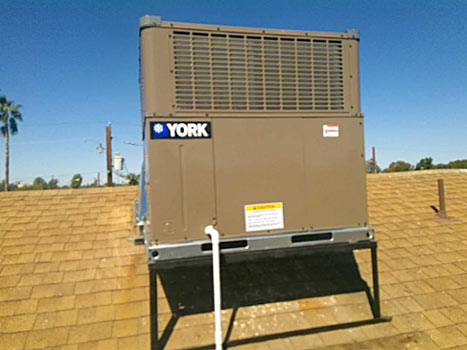Air Conditioner Filters
An important maintenance task that will ensure the efficiency of your air conditioner is to routinely replace or clean its filters. Clogged, dirty filters block normal air flow and reduce a system's efficiency significantly. With normal air flow obstructed, air that bypasses the filter may carry dirt directly into the evaporator coil and impair the coil's heat-absorbing capacity. Keeping the filter clean can lower your air conditioner's energy consumption.
For central air conditioners, filters are generally located somewhere along the return duct's length. Common filter locations are in walls, ceilings, furnaces, or in the air conditioner itself. Room air conditioners have a filter mounted in the grill that faces into the room.
Some types of filters are reusable; others must be replaced. They are available in a variety of types and efficiencies. Clean or replace your air conditioning system's filter or filters every month or two during the cooling season. Filters may need more frequent attention if the air conditioner is in constant use, is subjected to dusty conditions, or you have fur-bearing pets in the house.
Mario Bros Heating & Cooling also recommends advanced air cleaners that can filter air much better than standard filters can. An advanced air cleaner can filter pet dander, pollen, bacteria and even the flu virus from your indoor air. This gives you a healthier home, and keeps your HVAC system much cleaner.
Air Conditioner Coils
The air conditioner's evaporator coil and condenser coil collect dirt over their months and years of service. A clean filter prevents the evaporator coil from soiling quickly. In time, however, the evaporator coil will still collect dirt. This dirt reduces air flow and insulates the coil, reducing its ability to absorb heat. To avoid this problem, check your evaporator coil every year and clean it as necessary.
Another option we recommend for our Phoenix area customers is a UV light. Mold can affect an evaporator coil's efficiency, and the dark, damp interior of the coil system is a perfect place for mold to grow. A UV light mounted inside the coil will kill mold and keep it from growing.
Outdoor condenser coils can also become very dirty if the outdoor environment is dusty or if there is foliage nearby. You can easily see the condenser coil and notice if dirt is collecting on its fins. If so, it needs to be cleaned. We recommend that you minimize dirt and debris near the air conditioner itself. Your dryer vents, falling leaves, and lawn mower are all potential sources of dirt and debris. Cleaning the area around the coil, removing any debris, and trimming foliage back at least 2 feet (0.6 meters) allow for adequate air flow around the condenser.
Coil Fins
The aluminum fins on evaporator and condenser coils are easily bent and can block air flow through the coil. We use a small tool called a "fin comb" to comb the fins back into nearly original condition.
Condensate Drains
Another checkpoint for air conditioning maintenance is the condensate drain. We will run a stiff wire through the unit's drain channels to unclog them. Clogged drain channels prevent a unit from reducing humidity, and the resulting excess moisture may discolor walls or carpet.
Window Seals for Room Air Conditioners
At the start of each cooling season, we recommend that you inspect the seal between the air conditioner and the window frame to ensure it makes contact with the unit's metal case. Moisture can damage this seal, allowing cool air to escape from your house.
Preparing for Winter
In the winter, either cover your room air conditioner or remove and store it. Covering the outdoor unit of a central air conditioner will protect the unit from winter weather and debris. This cannot be done of course if the unit is a heat pump and used during the Winter season.

(623) 606-4647